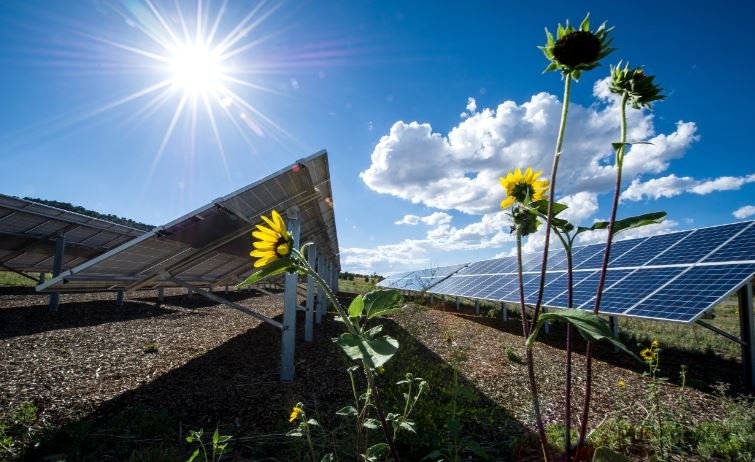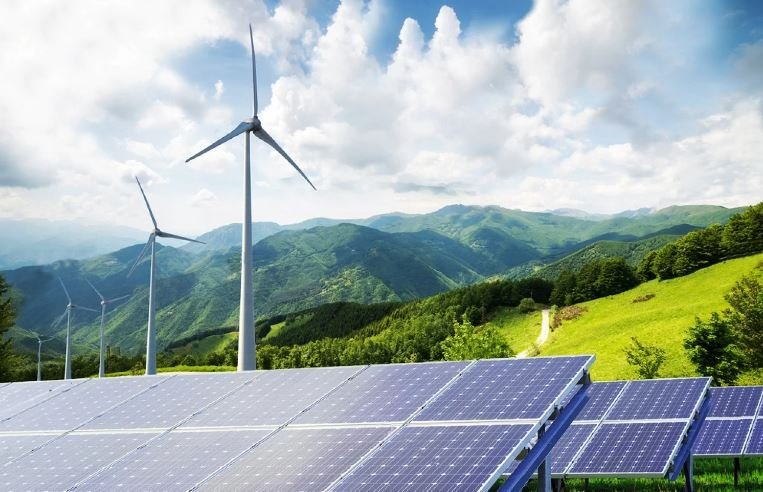Renewable energy sources and their benefits have become increasingly important as the world seeks sustainable alternatives to fossil fuels. By tapping into natural, inexhaustible resources such as the sun, wind, and water, renewable energy offers a cleaner, more eco-friendly way to power homes, businesses, and entire industries. Understanding the benefits of these energy sources can help individuals and governments make informed choices that support both economic growth and environmental sustainability.

1. Solar Energy: Harnessing the Power of the Sun
Solar energy is one of the most widely used renewable energy sources, providing numerous benefits. By converting sunlight into electricity through solar panels, this technology offers a clean and reliable energy supply. As the cost of solar panels continues to drop, more homeowners and businesses are installing them to reduce dependence on the traditional power grid.
Solar energy reduces greenhouse gas emissions, which contribute to global warming and climate change. By replacing fossil fuels, solar power decreases air pollution and helps maintain healthier environments. Moreover, solar energy systems are low-maintenance and offer long-term savings on electricity bills. Once installed, solar panels provide a free source of energy for decades, contributing to energy independence.
2. Wind Energy: Power from the Air
Wind energy is another key player in the renewable energy sources landscape. By using wind turbines to capture the kinetic energy of moving air, wind power generates electricity in a highly efficient manner. Wind farms, which can be located onshore or offshore, produce large amounts of energy while occupying relatively small land areas.
One of the greatest benefits of wind energy is that it produces no air or water pollution. Additionally, wind power reduces reliance on finite resources like coal and oil, which are major contributors to environmental degradation. As wind energy technology advances, it becomes more affordable, and wind farms create jobs in manufacturing, installation, and maintenance. This clean energy source supports both environmental and economic sustainability.
3. Hydropower: Energy from Water
Hydropower, generated from flowing or falling water, is one of the oldest renewable energy sources. Large dams and water turbines are used to convert the energy of moving water into electricity, making hydropower an extremely reliable and efficient source of renewable energy. Countries with abundant water resources have historically relied on hydropower as a key component of their energy systems.
Hydropower plants produce no direct emissions, contributing to a significant reduction in greenhouse gases. Hydropower also offers a stable energy supply since water flows are generally consistent. Additionally, hydropower provides flood control, irrigation, and clean drinking water in some regions. Despite concerns about the environmental impact of large dams, innovations in small-scale hydropower systems have made this technology more environmentally friendly.
4. Geothermal Energy: Heat from the Earth
Geothermal energy taps into the natural heat stored within the Earth’s crust to generate electricity or provide direct heating. This power plants use steam from underground reservoirs of hot water to drive turbines that produce electricity. Because the Earth’s heat is a constant, geothermal energy offers an extremely reliable and sustainable source of power.
The main advantage of geothermal energy is its ability to provide continuous, 24/7 energy, unlike solar and wind, which are weather-dependent. Geothermal systems have a minimal carbon footprint, as they produce very few emissions. Furthermore, this energy source is highly efficient and can be used in diverse regions, particularly in volcanic areas.
5. Biomass: Organic Material as Energy
Biomass energy comes from organic materials like wood, crop waste, and other plant matter. These materials can be burned to produce electricity or converted into biofuels. Biomass is unique among renewable energy sources because it can be used in both solid and liquid forms, making it highly versatile for various energy needs.
Biomass energy helps reduce waste by repurposing agricultural and forestry residues. This reduces the amount of material that would otherwise end up in landfills, decreasing methane emissions. Biomass is also carbon-neutral because the carbon dioxide released when it burns is balanced by the carbon absorbed during the growth of the plants. However, managing biomass resources responsibly is critical to ensuring that deforestation and land-use issues do not arise.
Conclusion
In conclusion, renewable energy sources and their benefits offer significant opportunities for creating a sustainable and eco-friendly future. Solar, wind, hydropower, geothermal, and biomass energy provide clean, reliable alternatives to fossil fuels. These energy sources not only reduce greenhouse gas emissions but also support job creation, energy independence, and long-term cost savings. As the world continues to shift toward renewable energy, the benefits of embracing these natural resources become clearer, paving the way for a healthier planet and a more resilient energy system.

